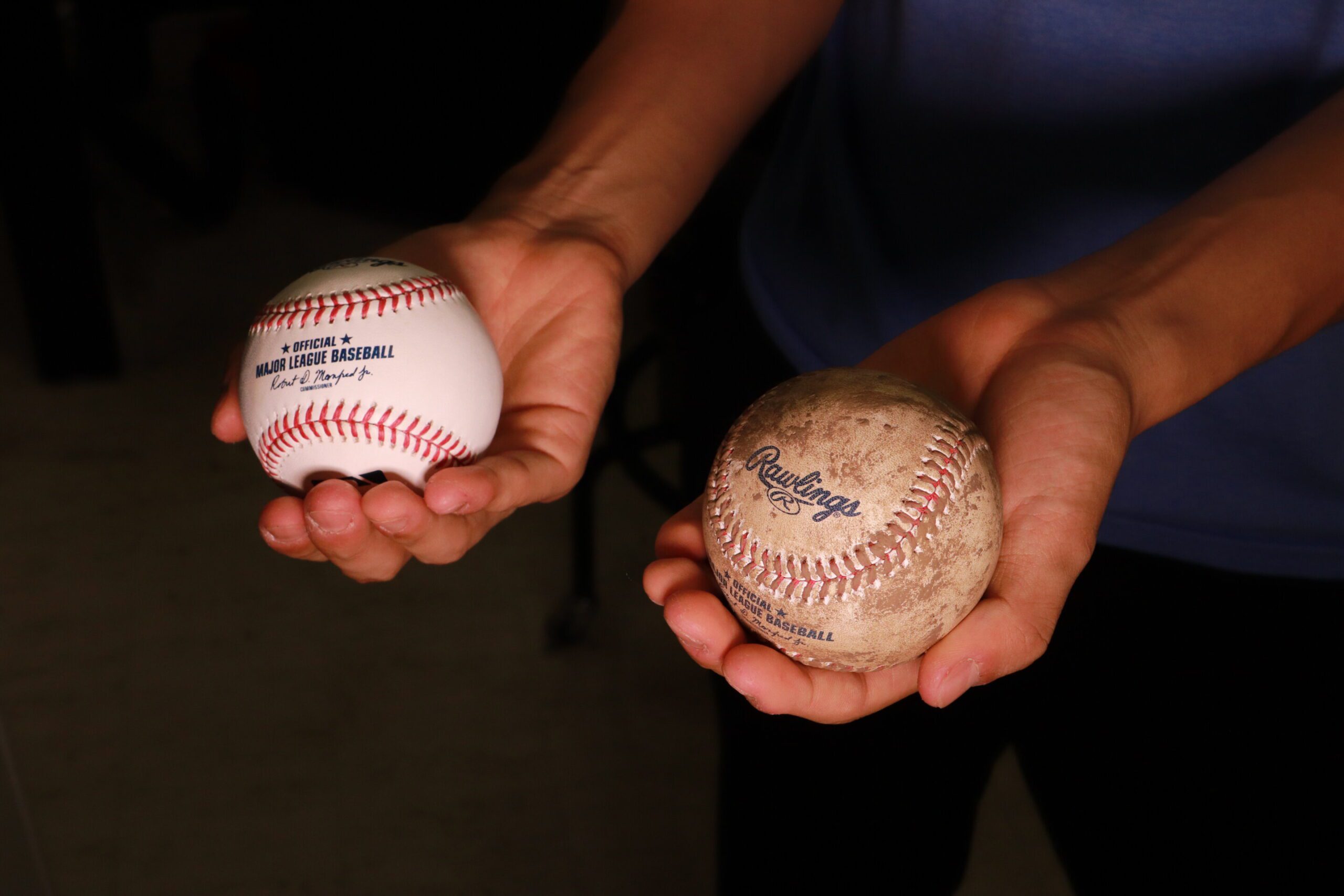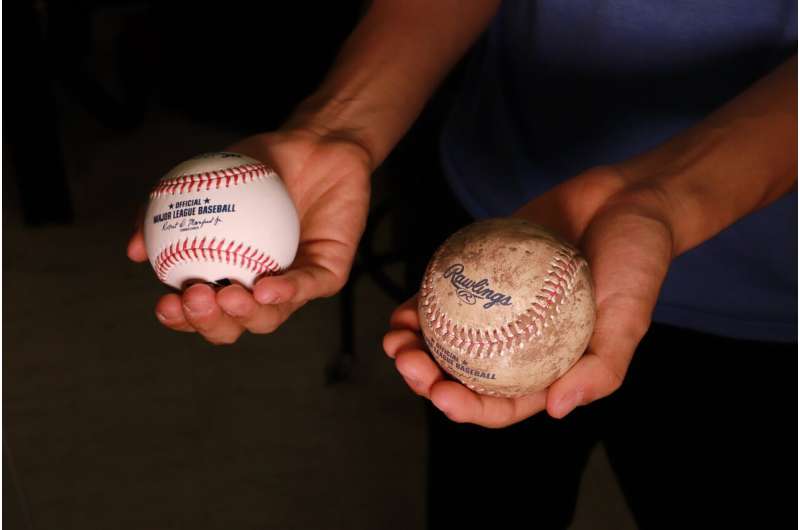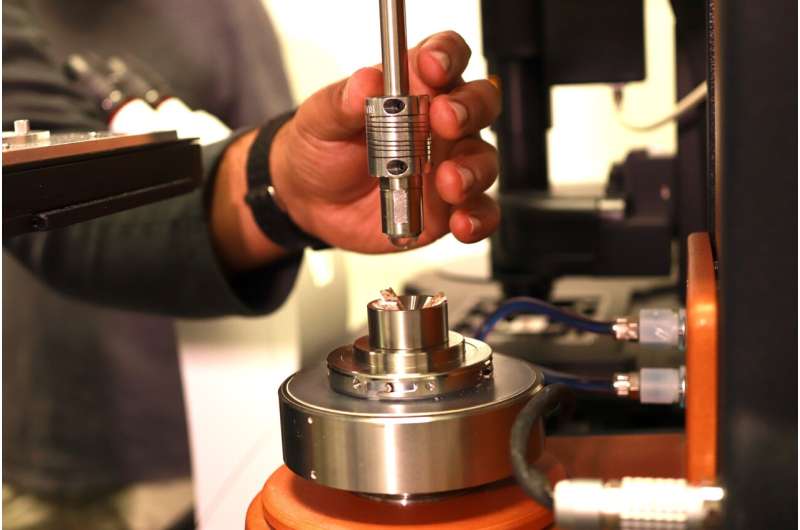

The unique properties of baseball’s famed “magic” mud have never been scientifically quantified—until now. In a paper in Proceedings of the National Academy of Sciences, researchers at the University of Pennsylvania School of Engineering and Applied Science (Penn Engineering) and School of Arts & Sciences (SAS) reveal what makes the magic mud so special.
“It spreads like a skin cream and grips like sandpaper,” says Shravan Pradeep, the paper’s first author and a postdoctoral researcher in the labs of Douglas J. Jerolmack, Edmund J. and Louise W. Kahn Endowed Term Professor in Earth and Environmental Science (EES) within SAS and in Mechanical Engineering and Applied Mechanics (MEAM) within Penn Engineering, and Paulo Arratia, Eduardo D. Glandt Distinguished Scholar and Professor in MEAM and in Chemical and Biomolecular Engineering (CBE).
In 2019, at the behest of sportswriter Matthew Gutierrez, the group analyzed the composition and flow behavior of the mud, which has been harvested for generations by the Bintliff family at a secret location in South Jersey and is applied by each team’s equipment manager to every game ball in Major League Baseball (MLB), including in this year’s playoffs.
“We provided a quick analysis,” says Jerolmack, “but not anything that rose to the level of scientific proof.”
Despite numerous articles and TV segments describing the mud that cite everyone from MLB players to the Bintliffs about the mud’s effects, the researchers could not find any scientific evidence that the mud actually makes balls perform better, as players claim.
“I was very interested in whether the use of this mud was based in superstition,” says Jerolmack.
Two years later, when Pradeep joined the labs, he took the lead in devising three sets of experiments to determine if the mud actually works: one to measure its spreadability, one to measure its stickiness and one to measure its effect on baseballs’ friction against the fingertips.

The first two qualities could be measured using existing equipment—a rheometer and atomic force microscopy, respectively—but to measure the mud’s frictional effects, the researchers had to build a new experimental setup, one that mimicked the properties of human fingers.
“The question is, how do you quantify the friction between the ball, your finger and the little oils between those two?” says Arratia.
To solve the problem, the researchers created a rubber-like material with the same elasticity as human skin, and covered it with oil similar to that secreted by human skin, then carefully and systematically rubbed the oiled material against strips of baseballs that had been mudded in the manner specified by MLB.
Xiangyu Chen, a MEAM senior and co-author of the paper, played a key role in devising the artificial finger apparatus. “We needed to have a consistent finger-like material,” says Chen. “If we just held our fingers to it, it wouldn’t produce very consistent results.”
The researchers say their work confirms what MLB players have long professed: that the magic mud works, and is not simply a superstition like playoff beards and rally caps. “It has the right mixture to make those three things happen,” says Jerolmack. “Spreading, gripping and stickiness.”
MLB has explored replacing the magic mud with synthetic lubricants, but so far failed to replicate the mud’s properties. The researchers suggest sticking with the original. “This family is doing something that is green and sustainable, and actually is producing an effect that is hard to replicate,” says Jerolmack.
Beyond baseball, the researchers hope their work—and the mud’s star status—will spark more interest in the use of natural materials as lubricants. “This is just a venue for us to show how geomaterials are already being used in a sustainable way,” says Arratia, “and how they can give us some exquisite properties that might be hard to produce from the ground up.”
More information:
Shravan Pradeep et al, Soft matter mechanics of baseball’s Rubbing Mud, Proceedings of the National Academy of Sciences (2024). DOI: 10.1073/pnas.2413514121
Provided by
University of Pennsylvania
Citation:
The secrets of baseball’s magic mud: Study quantifies its properties to show it’s not simply a superstition (2024, November 4)
retrieved 5 November 2024
from https://phys.org/news/2024-11-secrets-baseball-magic-mud-quantifies.html
This document is subject to copyright. Apart from any fair dealing for the purpose of private study or research, no
part may be reproduced without the written permission. The content is provided for information purposes only.